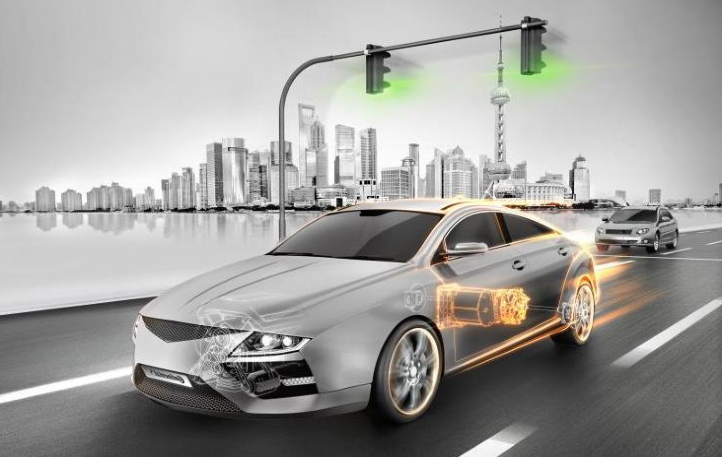By: Michelin
As cars move towards the new era of electrification, there are revolutionary changes happening in the automobile’s drive system, electronic architecture, and cockpit interaction. However, people’s impression of vehicle braking systems seems to remain in the past. The launch of Volkswagen’s pure electric models, ID.3 and ID.4, caused a lot of discussion due to the Continental Group’s new generation EPB-Si drum braking system used on the rear wheels. In consumers’ minds, drum brakes still seem to be the standard configuration for small and low-end vehicles, and at one point, there were “cost-saving” speculations about Volkswagen’s choice.
Are drum brakes really inferior to disc brakes? Not really, as the automobile has quietly changed.
Are drum brakes really “inferior”?
We can look at the advantages and disadvantages of drum brakes and disc brakes by examining their principles.
Drum brakes have a semi-closed brake drum fixed on the wheel. When the brakes are applied, the brake pad inside the drum is pushed outwards by a spiral structure, producing intense friction with the surface of the drum to achieve braking effects. Meanwhile, a disc brake has an open structure that produces braking force by clamping the brake disc with the brake caliper.
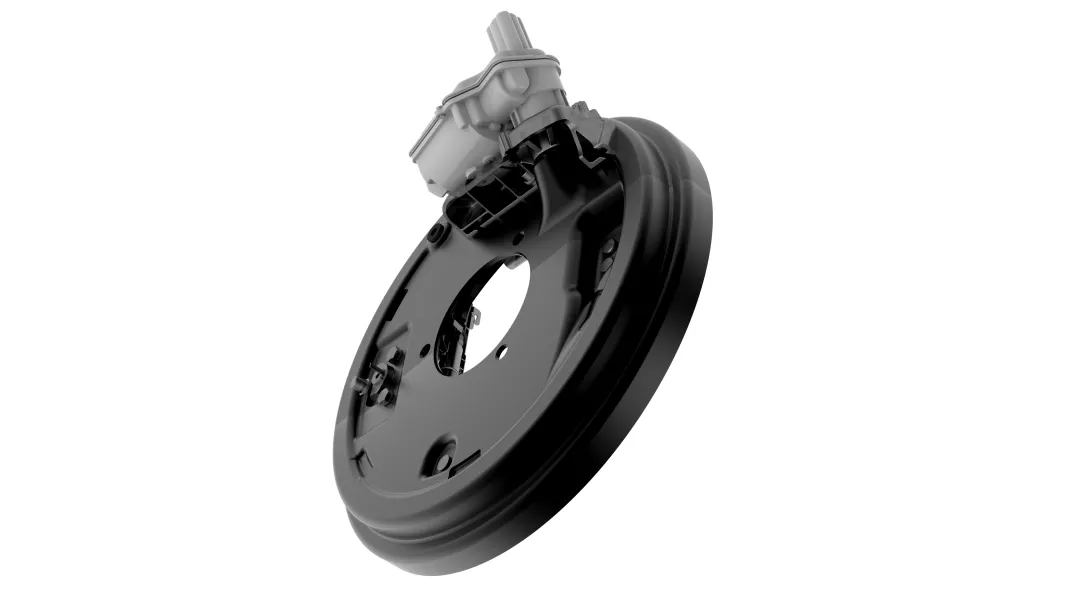
The differences in the structures determine their respective advantages and disadvantages. The spiral structure inside drum brakes has a self-enhancement effect, resulting in greater braking pressure, but the semi-closed structure also determines that its heat dissipation effect is not as good as the fully open disc brakes.
For traditional gasoline-powered cars, the vehicle mainly achieves deceleration by using brake pads and the friction generated between the brake disc/drum, a braking method known as friction braking. Braking is the process of converting mechanical energy into thermal energy. Frequent friction braking produces a large amount of heat, so for the last 20 years, disc brakes have been the common choice for traditional fuel-powered passenger cars, while drum brakes have been the choice for small cars and large commercial vehicles.
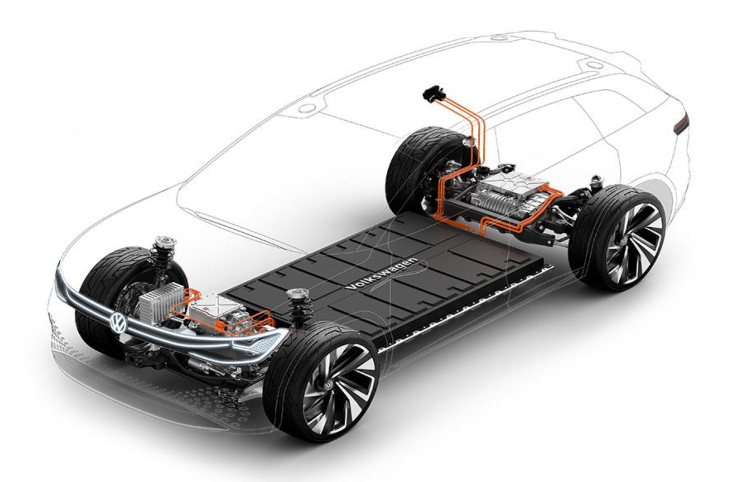
However, the braking principle of electric vehicles is different. They mainly reduce vehicle speed by outputting reverse torque through the drive motor. In this process, the drive motor not only outputs a reverse torque but also converts into a generator, charging the battery capacitor. This is the familiar “energy recovery” process. With the effect of the drive motor, the braking of electric cars is achieved through a combination of motor and friction braking.
Through the E-Taunus test, we can see that for the same driving route, traditional fuel-powered cars and electric vehicles had more than 120+ and less than 40 times of friction braking, respectively, significantly reducing the frequency of friction braking and naturally reducing the heat generated during braking.
 Since electric vehicles do not generate as much heat during braking, the risk of thermal decay due to insufficient heat dissipation is not a concern. This is why the new generation EPB-Si brake system is applied to electric vehicles.
Since electric vehicles do not generate as much heat during braking, the risk of thermal decay due to insufficient heat dissipation is not a concern. This is why the new generation EPB-Si brake system is applied to electric vehicles.
In fact, the semi-closed structure of drum brakes may even be an advantage in electric vehicles.
New requirements for braking systems in electric vehicles
When discussing the function of a component, it cannot be evaluated independently of the entire vehicle it belongs to, and the braking system is no exception.
The structure of electric vehicles determines the change in its requirements for the braking system. In addition to the traditional requirements for safety performance, operating costs, and service life, electric vehicle brakes also need energy recovery functions; they also need to prioritize the vehicle’s cruising range and have higher requirements for lightweight and environmental attributes.
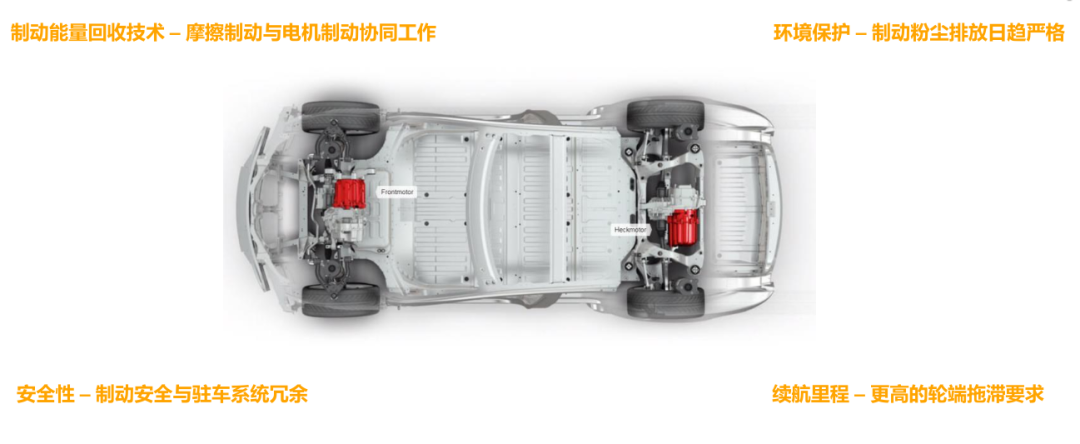
Safety performance, drum brakes vs. disc brakes
Safety is of course the primary responsibility of the braking system. In traditional passenger vehicles, the parking function is usually achieved by the gear selector + handbrake (or electronic parking brake EPB system). With the drastic simplification of electric vehicle transmission design, the gear selector lock mechanism is no longer a necessary design option, which poses higher requirements for the parking ability of the braking system.
Due to the difference in structure, the self-increasing force effect of the spiral structure inside the drum brakes can generate greater pressure and contact area between the brake pads and the drum, outputting 1700N·m of parking torque, and can hold a 3.5-ton vehicle on a 20% slope, which can be said to be the advantage of the natural structural design of drum brakes. In the past, drum brakes were widely used in large trucks, also recognizing their parking ability.
As for other aspects of safety performance, the result of 38.26m in continuous emergency braking, deceleration of 0.2g~0.3g in dynamic braking, and the ability to cope with steep slopes of up to 38% in indoor parking lots and other harsh conditions, meet all the performance that can be achieved by disc brake calipers. In terms of safety, drum brakes are not inferior to disc brakes.
Even the most concerned heat dissipation problem has a solution. In EPB-Si, a specially equipped gap adjustment mechanism with a thermal sensor is automatically activated at 70~90 degrees, and the organization adjuster can further adjust to compensate for the organization gap, avoiding the dragging and locking of the brake pads.
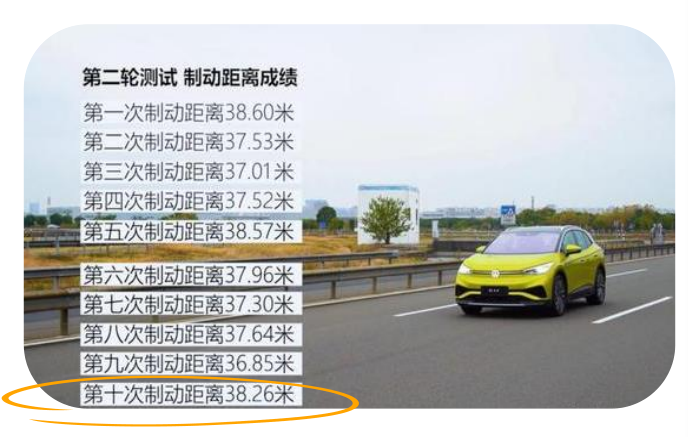
Automatic brake distribution, maximizing energy recovery
We know that the deceleration of electric vehicles is achieved through both motor braking and friction braking. During the process of motor braking, 90% of the heat produced by friction is converted into electrical energy and stored in the battery and capacitor, achieving energy recovery. The key to designing a braking system is to properly allocate motor braking and friction braking to achieve energy-saving and environmental protection while not affecting the braking feel. The new generation of EPB-Si braking systems working together with the MK C1 integral line control braking system developed by Continental Group can coordinate the motor and friction braking, allocate them reasonably, improve energy recovery efficiency, and minimize friction braking.
Environmental protection starts with the braking system
When a car is in operation, in addition to exhaust emissions, the suspended particulate matter (PM10) generated during braking is also a part of the emissions. In traditional fuel cars, compared with the emissions of internal combustion engines, brake dust can only be considered as a small part. However, with the replacement of internal combustion engines by power batteries, achieving “zero exhaust emissions,” the proportion of brake dust emissions in vehicle emissions has correspondingly increased. People’s demands for environmental protection will increase, and the regulation of environmental protection by various countries may also be adjusted accordingly.
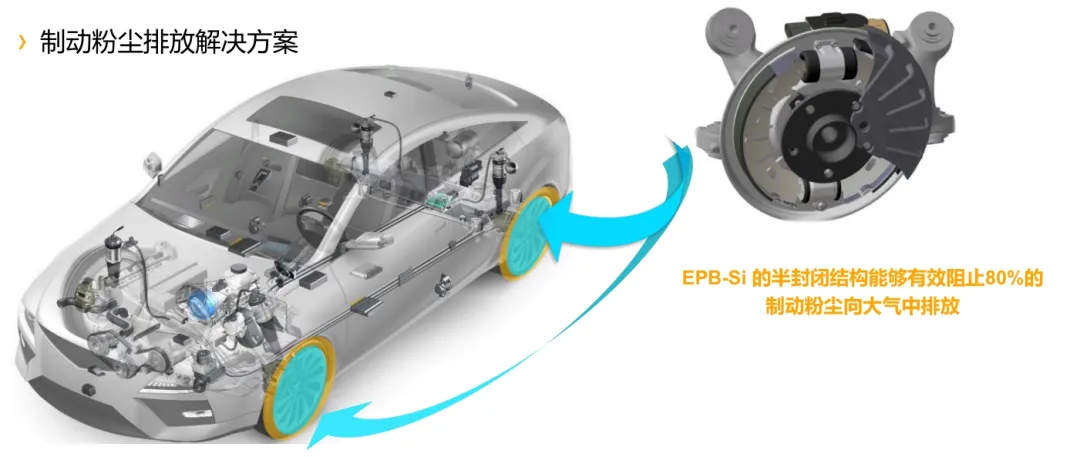
In this case, the semi-enclosed structure of drum brakes has become an advantage. Compared with the fully open disc brakes, drum brakes can collect 80% of the dust inside the brake, greatly reducing dust emissions. This seems to provide the opportunity for the future development of drum brakes.
Improving the range of electric vehicles
The range is the lifeline of an electric vehicle. In addition to electric loads and vehicle drag, wheel-end drag torque is also an important factor affecting the range. According to existing evaluation methods, reducing wheel-end drag by 1 N·m can help the vehicle increase its range by 10-15 km.
In the product structure of drum brakes represented by EPB-Si, there is a series of spring components that can help the brake pads maintain a detached state from the brake drum. According to the test method of the “Worldwide Harmonized Light Vehicles Test Procedure (WLTP)” to detect the size of wheel-end drag torque after multiple driving and braking conditions, The drag torque of EPB-Si products is not higher than 0.5 N·m in all conditions, which can provide great help in improving the range of the whole vehicle.
In addition, lightweighting is also an important means of improving the range of electric vehicles. Compared with the cast iron commonly used in disc brake calipers, EPB-Si is 20% to 30% lighter than disc brakes of the same size or matched with the same vehicle model. There is also a weight difference in corresponding brake discs and brake drums. On a car, the brake system and brake disc can be reduced by 2-3 kilograms.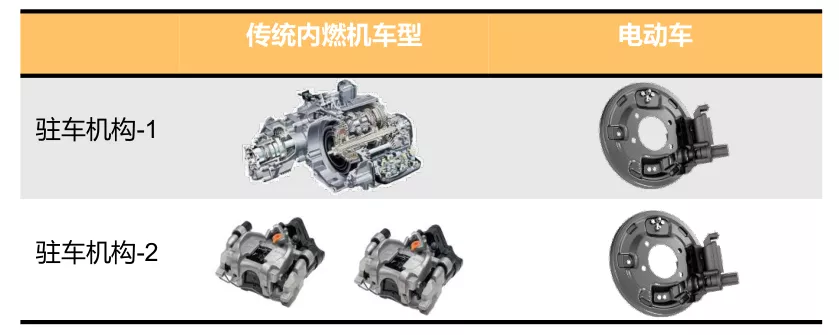
Although this amount seems negligible compared to the weight of the entire vehicle, isn’t the lightweighting of the entire vehicle relying on the accumulation of tens of thousands of lightweight components?
Extended Product Life
The semi-enclosed structure of the disc brake reduces not only the emission of dust, but also the oxidation of the brake pads when exposed to air. The reduction of rust caused by the oxidation of the brake pads in the air significantly ensures the braking function and reduces the wear of the brake pads. Meanwhile, by reasonably allocating motor braking and friction braking, the material wear and tear can also be reduced.
From the above points of view, the functions that can be achieved by disc brakes on electric vehicles can also be fully realized by drum brakes like EPB-Si. Drum brakes are not only not inferior to disc brakes as everyone imagines, but even achieve better effects in energy recovery, environmental protection, lightweighting, and durability.
If there has to be a disadvantage, it is the appearance. After all, when looking at the brake caliper through the wheel rim of a sports car, the requirements for appearance are getting higher and higher. Compared with the cool brake caliper, the appearance of the brake drum is indeed a relative disadvantage. However, as the requirements for wind resistance in car design become higher and higher, the design of wheel rims is gradually becoming more closed, and the opportunity to look at the brake system through the wheel hub is becoming less and less.
Moreover, who said that the drum brake cannot improve appearance. After all, where there is demand, there is the power to research and develop.
Lastly
With the transformation of automotive electrification, it is not only the new functions such as batteries, electronic architecture, and software that are quietly changing on cars, but also the functional requirements of traditional hardware are changing. Many structures that have inherent impressions in the minds of consumers like drum brakes can also have new positioning in electric vehicles.
With the popularization of the EPB-Si system on electric vehicles, in the future, drum brakes may no longer be synonymous with small cars and trucks, but become a label of automotive electrification.
This article is a translation by ChatGPT of a Chinese report from 42HOW. If you have any questions about it, please email bd@42how.com.
